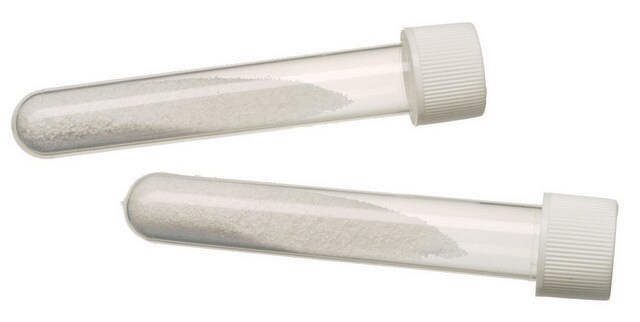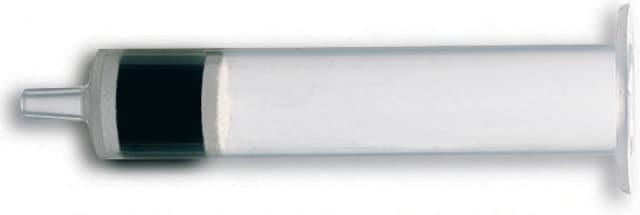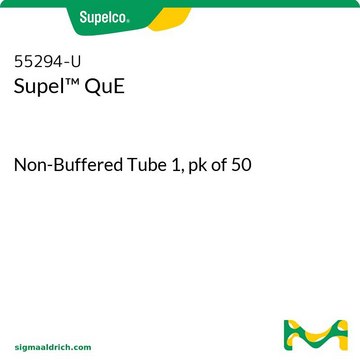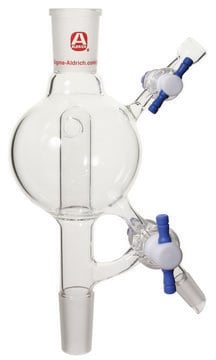55230-U
Supel™ QuE
PSA/ENVI-Carb Tube 1, pk of 50, suitable for EN 15662:2008 per BS
Synonim(y):
QuEChERS
Zaloguj sięWyświetlanie cen organizacyjnych i kontraktowych
About This Item
Kod UNSPSC:
41115712
NACRES:
NB.21
Polecane produkty
agency
suitable for BS EN 15662:2008
skład
magnesium sulfate, 900 mg (Cat. No. 63135)
Supelclean™
ENVI-Carb, 15 mg (Cat. No. 57210-U)
Supelclean™
PSA, 150 mg (Cat. No. 52738-U)
opakowanie
pk of 50
metody
QuEChERS: suitable
pojemność probówki reakcyjnej (do wirowania)
12 mL , Greiner Cat. No. 163270
Zastosowanie
food and beverages
metoda separacji
normal phase
Szukasz podobnych produktów? Odwiedź Przewodnik dotyczący porównywania produktów
Opis ogólny
Dispersive SPE (dSPE), often referred to as the "QuEChERS" method (Quick, Easy, Cheap, Effective, Rugged, and Safe), is modern sample prep technique that is becoming increasingly popular in the area of multi-residue pesticide analysis in food and agricultural products.
Using the QuEChERS method, food/agricultural samples are first extracted with an aqueous miscible solvent (e.g., acetonitrile) in the presence of high amounts of salts (e.g., sodium chloride and magnesium sulfate) and/or buffering agents (e.g. citrate) to induce liquid phase separation and stabilize acid and base labile pesticides, respectively. Upon shaking and centrifugation, an aliquot of the organic phase is subjected to further cleanup using SPE. Unlike traditional methods using SPE tubes, in dispersive SPE, cleanup is facilitated by mixing bulk amounts of SPE (e.g., Supelclean PSA, ENVI-Carb, and/or Discovery DSC-18) with the extract. After sample cleanup, the mixture is centrifuged and the resulting supernatant can either be analyzed directly or can be subjected to minor further treatment before analysis.
Supelco carries a line of vials and centrifuge tubes containing pre-determined amounts of salts and SPE sorbents to support the most common method configurations used today.
Using the QuEChERS method, food/agricultural samples are first extracted with an aqueous miscible solvent (e.g., acetonitrile) in the presence of high amounts of salts (e.g., sodium chloride and magnesium sulfate) and/or buffering agents (e.g. citrate) to induce liquid phase separation and stabilize acid and base labile pesticides, respectively. Upon shaking and centrifugation, an aliquot of the organic phase is subjected to further cleanup using SPE. Unlike traditional methods using SPE tubes, in dispersive SPE, cleanup is facilitated by mixing bulk amounts of SPE (e.g., Supelclean PSA, ENVI-Carb, and/or Discovery DSC-18) with the extract. After sample cleanup, the mixture is centrifuged and the resulting supernatant can either be analyzed directly or can be subjected to minor further treatment before analysis.
Supelco carries a line of vials and centrifuge tubes containing pre-determined amounts of salts and SPE sorbents to support the most common method configurations used today.
Przydatność
Suitable for food/agricultural samples with moderate levels of chlorophyll and carotinoides (e.g., carrots, romaine lettuce, head lettuce, etc.). Ideal for clean up of 6 mL extract after initial food extraction and phase partitioning.
Informacje prawne
Supel is a trademark of Sigma-Aldrich Co. LLC
Supelclean is a trademark of Sigma-Aldrich Co. LLC
Ta strona może zawierać tekst przetłumaczony maszynowo.
Kod klasy składowania
13 - Non Combustible Solids
Klasa zagrożenia wodnego (WGK)
WGK 1
Temperatura zapłonu (°F)
Not applicable
Temperatura zapłonu (°C)
Not applicable
Wybierz jedną z najnowszych wersji:
Masz już ten produkt?
Dokumenty związane z niedawno zakupionymi produktami zostały zamieszczone w Bibliotece dokumentów.
Klienci oglądali również te produkty
Chun-Lin Fan et al.
Journal of AOAC International, 98(1), 130-148 (2015-04-11)
A 3 month study was conducted on the ruggedness of a multiresidue method for accuracy and stability. The results indicate that in terms of Youden pair ratios of 201 pesticide aged tea samples falling approximately within 1.00-1.20 of the ratio
Tsuyoshi Imazawa et al.
Shokuhin eiseigaku zasshi. Journal of the Food Hygienic Society of Japan, 46(6), 277-281 (2006-01-31)
An analytical method was developed for the determination of phenmedipham (PM) in agricultural products using reversed-phase high-performance liquid chromatography with UV detection. A sample was extracted with acetonitrile, and the acetonitrile layer was separated by salting-out. The acetonitrile phase was
U Führer et al.
Analytical and bioanalytical chemistry, 354(3), 333-343 (1996-01-01)
Halogenated anisoles (methyl-phenyl ethers) appear to be ubiquitous organic trace compounds in the environment. An analytical method is presented for analyzing the altogether 134 congeners of chloro-, bromo- and mixed bromochloro-anisoles on an isomer-specific basis in air. High volume sampling
Sachiyo Ibuki et al.
Shokuhin eiseigaku zasshi. Journal of the Food Hygienic Society of Japan, 48(5), 139-143 (2007-11-22)
A method for simultaneous determination of Dichlorvos (DDVP), Trichlorfon (DEP) and Naled (BRP) in fruits and vegetables by liquid chromatography with tandem mass spectrometry (LC/MS/MS) was developed. Pesticides were extracted with ethyl acetate together with phosphoric acid and anhydrous sodium
Anna Martínez-Villalba et al.
Electrophoresis, 34(6), 870-876 (2013-01-22)
Veterinary medicines are widely administered to farm animals since they keep animals healthy at overcrowded conditions. Nevertheless the continuous administration of medicines to farm animals can frequently lead to the presence of residues of veterinary drugs in consumption products. Amprolium
Nasz zespół naukowców ma doświadczenie we wszystkich obszarach badań, w tym w naukach przyrodniczych, materiałoznawstwie, syntezie chemicznej, chromatografii, analityce i wielu innych dziedzinach.
Skontaktuj się z zespołem ds. pomocy technicznej











